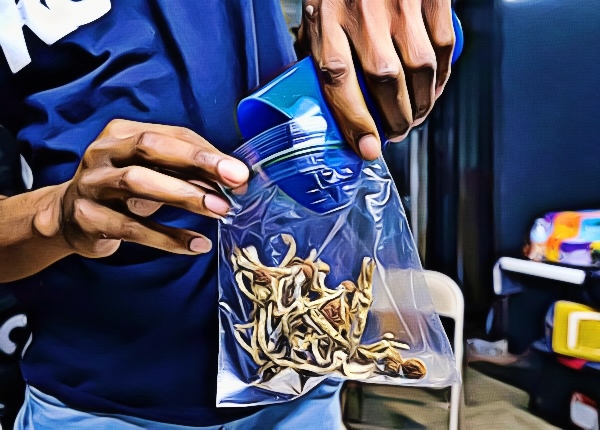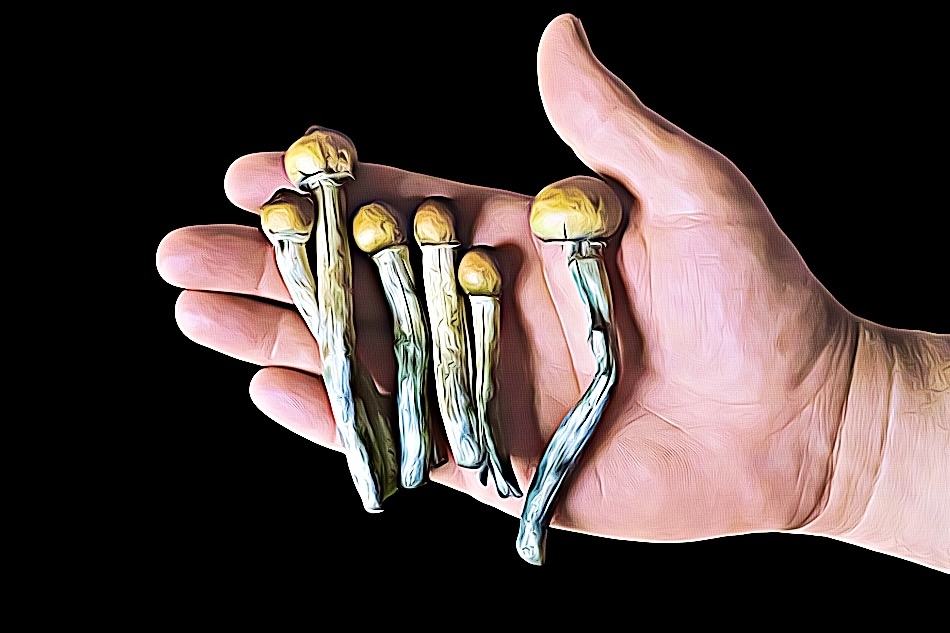Thanks to a constant portrayal through modern music, movies, TV shows, social media, and pop culture, the knowledge of magic mushrooms—or “shrooms,” as they’re loosely called—is more widespread than ever. Unfortunately, the same can be said for its illicit use.
In recent years, magic mushrooms have become a significant problem for America’s fight against drug use because of their uncontrolled distribution and their tendency to foster addiction and dependence among users. Over the years, the U.S. Drug Enforcement Administration has also reiterated its stance on psychedelic fungi being classified as a Schedule I substance because many still overlook the dangers of consuming them.
If you feel that you or a loved one are struggling with an addiction to magic mushrooms, then it’s important to brush up on everything you need to know about these banned substances and what they are capable of. This is especially important if you want to quit your addiction to this substance and get your life back on track. Fortunately, we’ve put together this comprehensive guide on everything you need to know about shrooms so that you can view them from rational and objective perspectives that are essential for proper treatment:
What Are “Shrooms?”
Shrooms are a type of hallucinogenic drug that is consumed orally, naturally grown, and harvested. Compared to other illegal drugs on the street and black market, these banned substances bear a much deeper link to experiences of hallucinations and vivid experiences. In fact, these same drugs are perceived today as the poster child of “substance-assisted spiritual experiences” because of their long history of being associated with self-discovery and induced out-of-body experiences (more on this later).
While standard natural drugs are considered by many to be a threat to the safety and well-being of people, shrooms bear an even bigger problem because of how they significantly alter one’s perception. However, this same cause for concern has also turned into a double-edged sword since it acts like a catalyst that motivates people to take them for the sake of experiencing a sense of euphoria, connection, and distorted sense of time.
In the same way that marijuana or cannabis comes in multiple strains that each provide unique effects and types of “highs,” magic mushrooms come in different forms of fungi that also possess distinct properties. The drug in question essentially comes in different types of species of fungi that have unique characteristics, but all pose an equal cause for concern. Here are several examples to know about:
- Psilocybe semilanceata (Street name: Liberty Caps)
- Psilocybe tampanensis (Street names: Magic Truffles, Philosopher’s Stone)
- Psilocybe azurescens (Street name: Flying Saucer Mushrooms)
- Psilocybe zapotecorum
- Psilocybe cyanescens (Street name: Wavy Caps)
- Copelandia cyanescens a.k.a. Panaeolus cyanescens (Street name: Blue Meanies)
The Proprietary Compound of Shrooms That Makes Them So Dangerous
When it comes to understanding the full effect of psychedelic mushrooms or shrooms, it’s important to go deeper into the details by understanding their main chemical compound: psilocybin.
As the names above for different forms of magic mushrooms suggest, psilocybin is a proprietary ingredient that is found in every type of hallucinogenic mushroom. In fact, it can vary depending on which species it is found in. Let’s look deeper into this particular compound for a better understanding of how it exactly works:
Defining the Primary Compound
According to its technical definition, psilocybin is a hallucinogen that works by activating serotonin receptors in the prefrontal cortex. This is the part of the brain that affects mood, cognition, and perception.
The effects of this chemical compound, more often than not, are dependent on the quantity of the drug taken, past experiences, and expectations. Compared to what most people expect, psilocybin does not always cause active visual or auditory hallucinations but instead distorts how some people who use the drug perceive objects and people already in their environment.
In terms of potency, the capabilities of a mushroom’s psilocybin content depend on several key growth factors, such as:
- The species of the mushroom
- The origin of the mushroom
- The growing conditions of a “shroom”
- The period in which the magic mushroom was harvested
- The manner in which the substance is consumed (whether a person eats them fresh or dried)

The Impact of Psilocin
Psilocybin itself is not responsible for causing the effects of consuming these illegal substances as the body converts it into psilocin before all else. This is the actual ingredient that causes associated effects and hallucinations.
From a chemical perspective, psilocin is commonly viewed as a type of compound responsible for influencing the brain’s serotonin levels in such an extreme manner. This natural reaction is so strong to the point where it induces the brain to conjure unusual or altered perceptions while leveraging other side effects on the body associated with hallucinogen consumption.
Side Effects
Although many may expect magic mushrooms to bear a “milder” experience of sorts because of their properties as a naturally occurring substance, this couldn’t be any further from the truth. When consumed, in fact, these organic sources of highs can lead to physical and mental effects that range from minor to major, depending on dosage and the species of the mushrooms that are ingested.
At this point, let’s go over the physical and mental effects of shrooms in further detail:
| Physical | Mental |
| Dilated pupils | A distorted sense of time, place, space, and reality (all linked to the hallucinogenic nature of the substance) |
| Drowsiness | Euphoria |
| Headaches | Panic or paranoia |
| Increased heart rate, blood pressure, and temperatures | Introspective or spiritual experiences |
| Lack of coordination | Visual and auditory hallucinations |
| Muscle weakness | Psychosis |
| Nausea | Nervousness |
| Yawning |
Currently, researchers are constantly undertaking more research efforts to fully understand the long-term, lasting side effects of magic mushrooms since the current body of knowledge surrounding them is still growing. In a growing number of studies and tests, however, scientists reported long-term changes in personality as one of the possible implications of continued use.
How Long Do the Side Effects Last?
Given the diminished level of bioavailability that the compounds of the average psychedelic shroom have due to the fact that they are digested first, the duration of their side effects is notably shorter.
Once psilocybin is converted into psilocin after natural digestive processes and begins to influence serotonin levels in the brain, the various expected effects begin to take place within 20 to 40 minutes after consumption. Through the process of natural metabolization and the natural half-life of psilocybin, the same study says that the short-term effects of the compound can last anywhere between 6 to 12 hours.
Conclusion
While popular culture may have popularized shrooms as a sort of “hippie drug” that’s perfect for “exploring the unknown,” it’s important to remember that it is a dangerous substance that can cause harmful effects in the short and long term. By taking this guide into mind, you’ll be able to view magic mushrooms in the way that you should be viewing them so that it will be easier to avoid them or help convince a loved one to stop taking them. Remember, you should always work hard to get your life back on track so that you can be a positive influence to those around you!
Sources:

